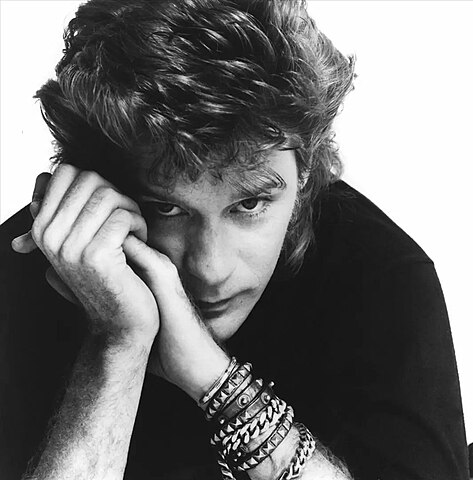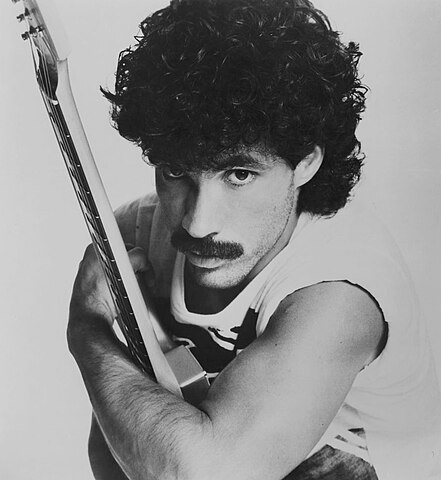Introduction
Daryl Hall & John Oates aka Hall and Oates were one of the most popular acts during the late 70s to mid 80s music. Their music consists of classic rock and roll, new wave and blue-eyed soul, sometimes they themselves referred to their style as “rock soul. The duo tasted their first legitimate success with the Top 10 single “Sara Smile” in 1976. They achieved their first #1 song “Rich Girl.” By the 1980s, their formula of rock and soul with elements of new wave at last gave them the big commercial break they were hoping for. The duo’s self-produced album Voices (1980) spawned hit singles “You’ve Lost That Lovin’ Feeling”, “You Make My Dreams Come True” and the #1 “Kiss On My List”; the LP finally became platinum. The follow-up album Private Eyes (1981) produced two #1 singles, the title track and “I Can’t Go For That (No Can Do).” All of their songs have become oldies music classic pop songs. Their following albums – H2O, Big Bam Boom, Ooh Yeah! and Change of Season also became gold- and platinum- selling releases. By 1984, Hall and Oates became the biggest-selling and most successful duo in music history, surpassing erstwhile leaders the Everly Brothers in terms of chart success in both singles and albums. They’ve been inductees to the Rock and Roll Hall of Fame since 2014.
Formation and first recordings
The musical duo of Hall & Oates consists of Daryl Hall (born Daryl Franklin Hohl in Pottstown, Pennsylvania on October 11, 1946) and John Oates (born John William Oates in New York City on April 7, 1948).
Before they met and became musical partners, Hall and Oates was the leader of their separate bands. The two men were both studying at Temple University in Philadelphia. However, it was on a chance encounter that Hall and Oates really got to know each other after finding out that they attended the same school as well as shared the same musical interest.
They began to write songs together and eventually shared a handful of apartments in the city. It would take some more time for them before they formed themselves as a musical duo. Their debut album Whole Oats was released on Atlantic Records in 1972 which went unnoticed.
The same thing went for their next two album Abandoned Luncheonette (1973) and War Babies (1974), although Luncheonette’s single “She’s Gone” would become a Top 10 hit when it was re-released in 1976. During the early phase of their recording careers Hall & Oates had yet to establish their own sound, as they would alternate among several genres such as folk, pop, R&B and soul.
First hits
After their largely unsuccessful stint on Atlantic, Daryl Hall & John Oates moved to RCA in 1975. At last, their gender-bending formula led them to gain their very first hit album Daryl Hall & John Oates. The album included the ballad entitled “Sara Smile,” a song Hall wrote for his then-girlfriend Sara Allen. It peaked at #4 on the Billboard Hot 100 early in 1976, becoming their first top 10 hit.
Buoyed by the success of “Sara Smile,” the duo’s former label Atlantic Records re-released “She’s Gone,” which ended up doing well on the Hot 100. It peaked at #7 there, a remarkable improvement from its earlier chart position at #60 when it was first released two years ago.
Daryl Hall & John Oates followed their first successes with their next LP Bigger Than Both of Us, also in 1976. Although its first single “Do What You Want, Be What You Are” barely cracked the Top 40, its second single “Rich Girl” rose all the way to #1, the duo’s first chart-topping single.
Lean years
Despite their hits, Hall & Oates later found it considerably difficult to follow them up with another hit record and decent radio airplay, despite touring and promoting assiduously. The main reason was wrong timing — around the time they were about to establish themselves in the mainstream music industry, disco was all the rage. Their albums Beauty on a Back Street (1977) and X-Static (1979) did not fare well on the charts. RCA also tried to push Daryl Hall as a solo recording artist. They recorded his first album Sacred Songs in 1979, but the label felt that it was deemed too “experimental” and was unwilling to release it promptly (Sacred Songs was finally released in 1980).
Breakthrough success in the 1980s
Hall & Oates had become more adventurous with their sound, and that was the problem — producers and studio musicians they had worked with were not familiar with their style. The duo felt that it was a great stumbling block to their success.
The men decided to record in New York City instead of Los Angeles, as they had previously done. They enlisted the help of other people such as Hall’s aforementioned girlfriend Sara Allen (who was also a songwriter), Allen’s younger sister Janna, and renowned engineer Neil Kernon. Result is their first self-produced album Voices (1980), which finally emerged their own true sound. The LP yielded four Billboard Hot 100 hits such as “Kiss on My List” (#1 pop), “You Make My Dreams” (#5 pop), their cover of the Righteous Brothers’ “You’ve Lost that Lovin’ Feelin'” (#12 pop), and “How Does It Feel to Be Back” (#30 pop). Voices became a slow but sure massive hit, spending a total of 100 weeks on the Billboard 200 album chart and peaking at #17.
The success of Voices paved the way for their next album Private Eyes, which the duo co-produced with Kernon. Released in September 1981, Private Eyes became a bigger hit compared to Voices, peaking at #5 on the Billboard 200. It also did well on the R&B album chart, peaking there at #11. Private Eyes spawned four hit singles, including two number one’s on the Hot 100 with “Private Eyes” and “I Can’t Go for That (No Can Do),” as well as “Did It in a Minute” (#9 pop) and “Your Imagination” (#33, pop). “I Can’t Go for That” also reached #1 on the R&B singles chart, a rare feat for a white act.
Hall & Oates released their next album H2O in 1982. It was even more successful than Voices and Private Eyes. H2O was more heavy on synths and yielded three top 10 pop hits: “Maneater” which became their fifth #1 hit, as well as “One on One” (#7 pop, #4 adult contemporary, #8 R&B) and “Family Man” (#6 pop). H2O became Hall & Oates’ most successful album, selling over two million copies worldwide and became certified platinum by the RIAA.
The duo continued their string of hits when they released their eleventh studio album Rock ‘n Soul Part 1 (1983), which went to double platinum. It spawned hit singles again, with “Say It Isn’t So” (#2 pop, #8 adult contemporary, #1 dance) and “Adult Education” (#8 pop).
By 1983 Hall & Oates had become one of the most successful American artists. They had to take a long break from recording and touring as well as to enjoy their success. In 1984 they came back with another album Big Bam Boom which gave them their sixth number one pop single “Out of Touch” (it also landed on #8 adult contemporary and #1 dance), “Method of Modern Love” (#5 pop), “Some Things Are Better Left Unsaid” (#18 pop) and “Possession Obsession” (#30 pop).
In a bid to fulfill their album obligations to RCA, Hall & Oates released their second live album Live at the Apollo with David Ruffin and Eddie Kendricks of the Temptations. The album yielded a Top 20 pop medley “The Way You Do the Things Tonight”/”My Girl.”
Around the same time, Daryl Hall’s solo career did well at the moment. His solo single “Dreamtime” peaked at #5 on the Billboard Hot 100 in 1986, while the follow-up “Foolish Pride” peaked at #33 on the same chart.
Arista years
After RCA, the duo signed with Arista Records in 1987. They released their first album on that label Ooh Yeah! which gave them their last Top 10 pop hit “Everything Your Heart Desires,” at #3. In 1990 they released another album Change of Season which yielded their last major hit with “So Close” (#11 pop, #6 adult contemporary). Ooh Yeah! was certified platinum while Change of Season went gold, although fans and critics alike viewed both of these albums as not at par with their previous work. It was at that point where their dominance on the charts started to end.
Later career
The first decade of the millennium saw a flurry of live and “best-of” releases. The year 2001 alone saw the releases of three live albums, (Daryl Hall & John Oates – Limited Edition, Greatest Hits Live, and Ecstasy on the Edge) as well as four “greatest hits” compilation albums (The Very Best of Daryl Hall & John Oates, The Ballads Collection — RCA 100th Anniversary Series), Definitive Collection and The Essential Collection.
As far as studio albums are concerned in the 2000’s, Hall & Oates haven’t been much active recording for new material — so far they’ve only released 2003’s Do It for Love, 2004’s Our Kind of Soul and 2006’s Home for Christmas. A career-spanning boxed set entitled Do What You Want, Be What You Are: The Music of Hall & Oates was released in 2009. It contains four CD’s of 74 tracks featuring several live performances and unreleased songs as well as songs Daryl Hall and John Oates had recorded before forming as a duo.
Daryl Hall and John Oates are still active up to the present, both as a duo as well as separately. They appeared and performed on several TV shows such as American Idol and The Voice, as well as as continued touring. In 2014, they were inducted into the Rock and Roll Hall of Fame.


